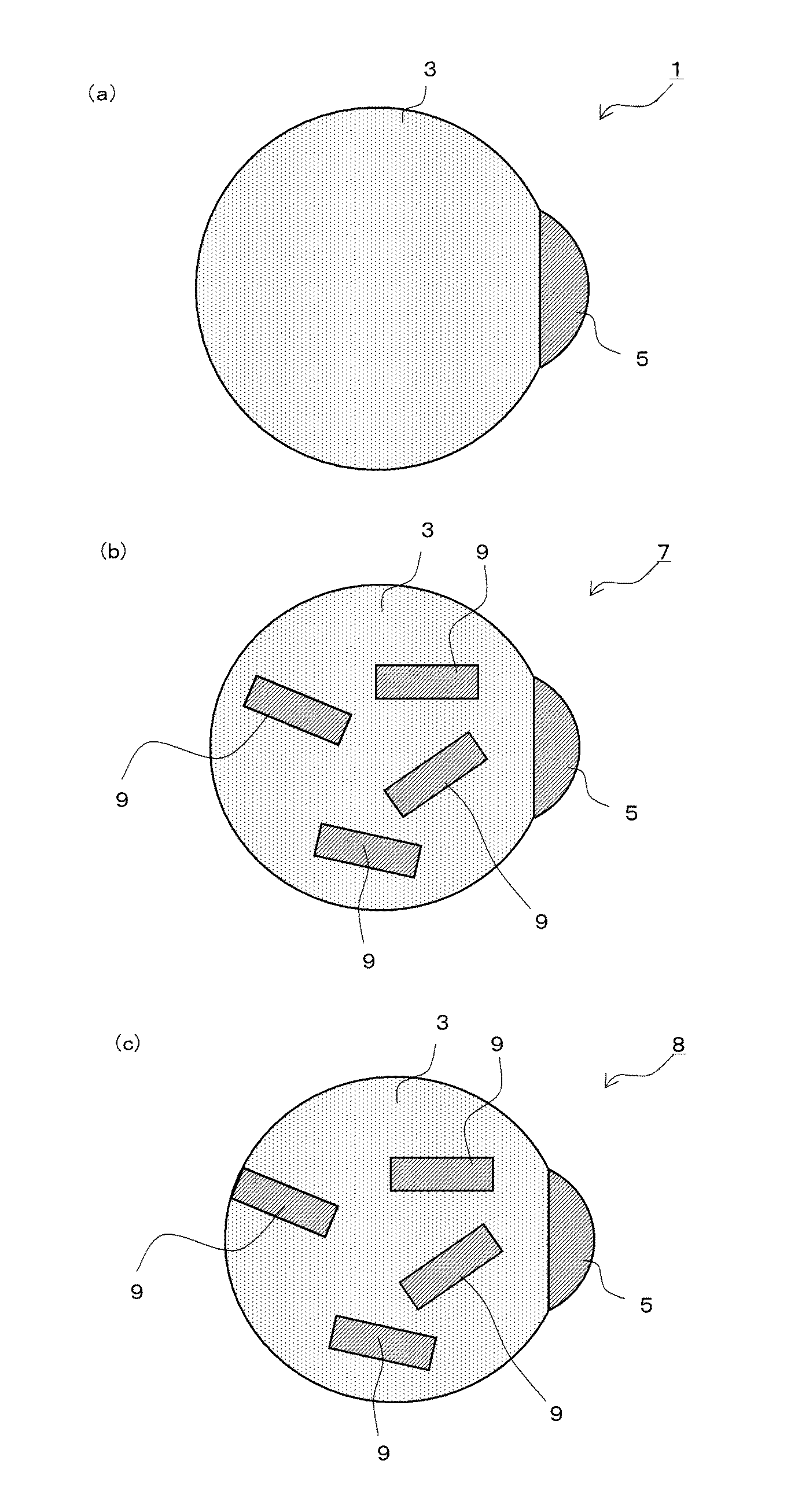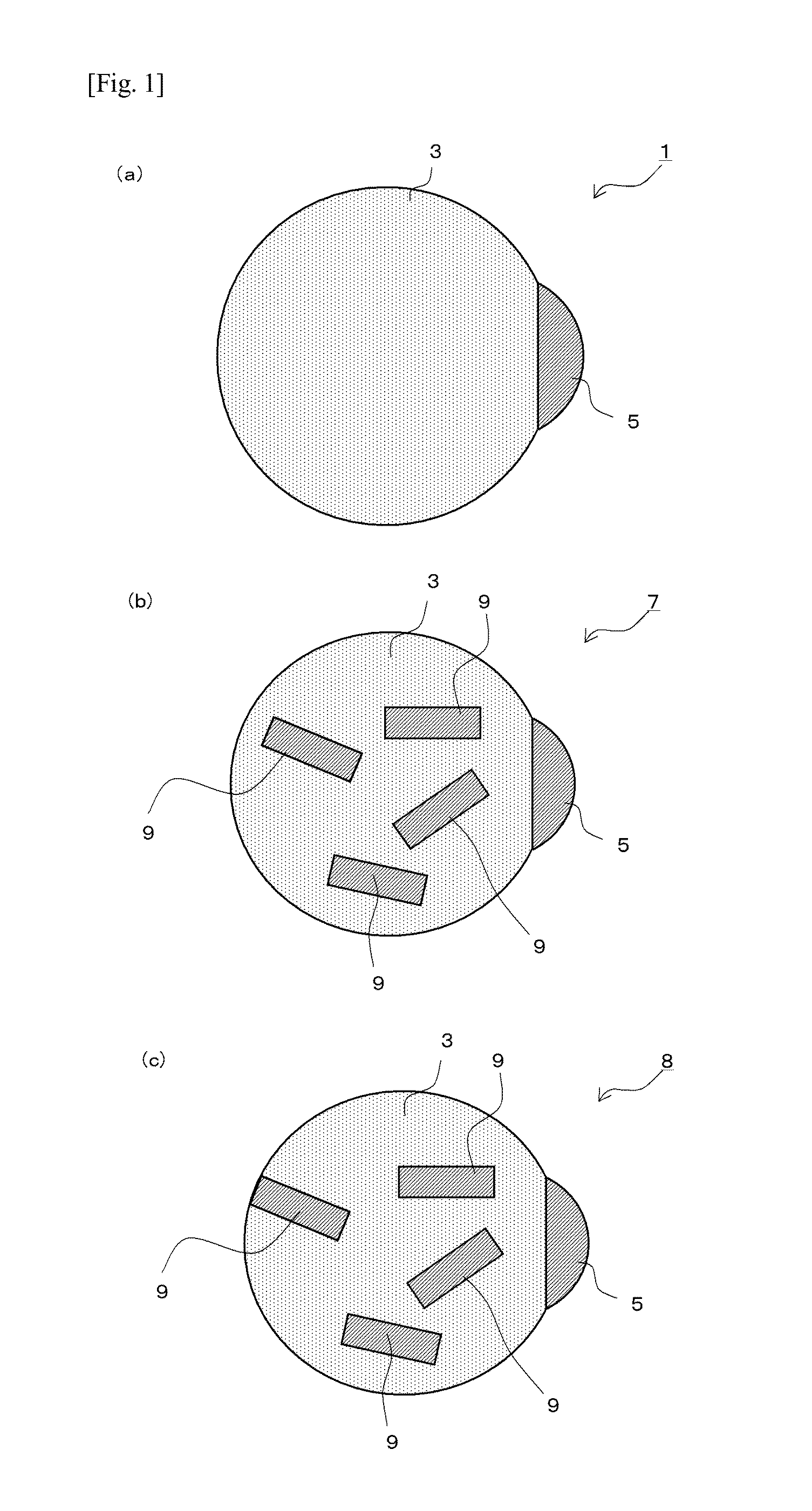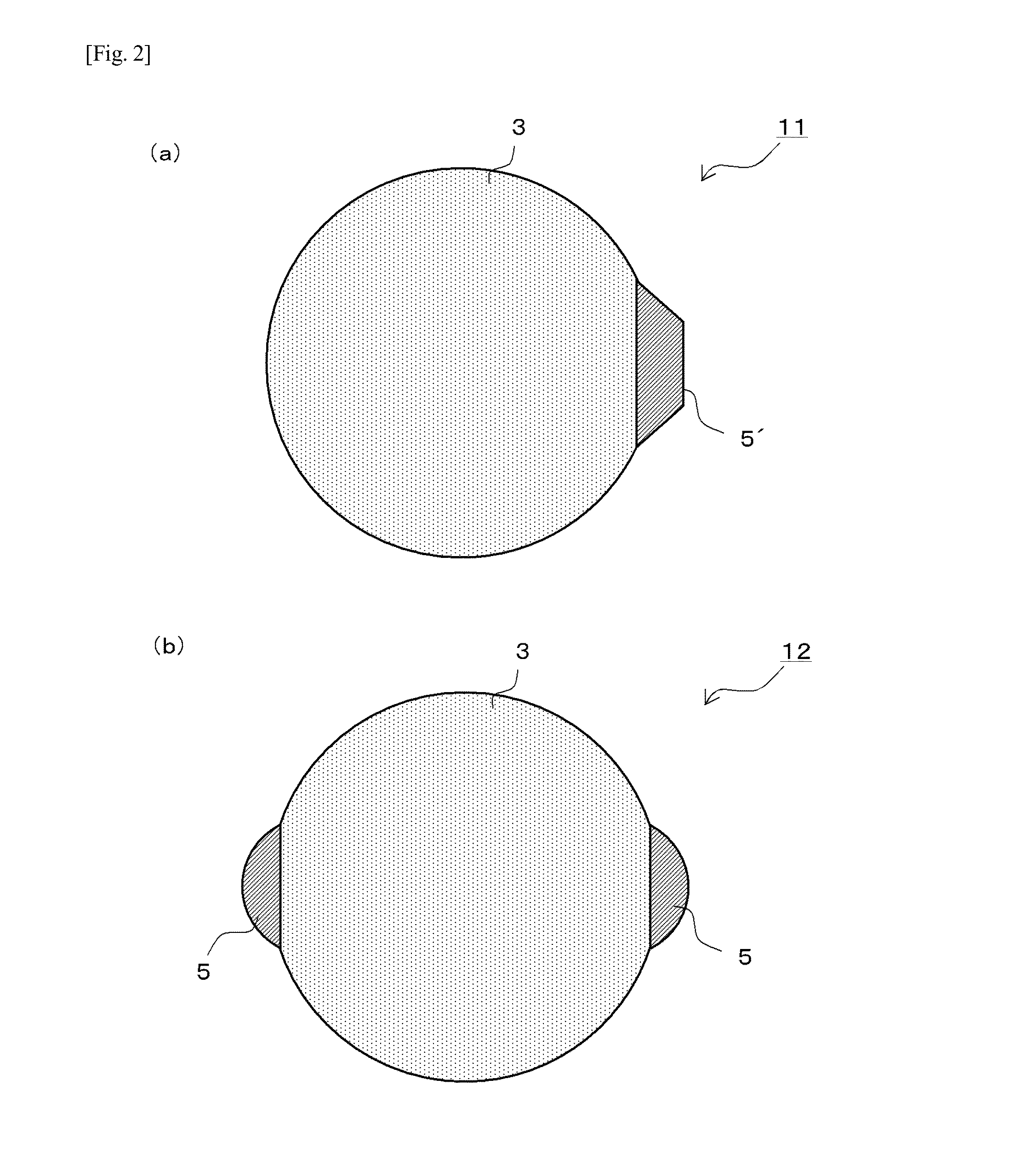Nanosized particles used in anode for lithium ion secondary batteries, and method for producing the same
a lithium ion secondary battery and nano-particle technology, applied in the direction of conductive materials, non-conductive materials with dispersed conductive materials, metal-working apparatuses, etc., can solve the problems of high capacity and superior cycle characteristics of anodes that utilize silicon-type alloy as an anode active materials, and achieve the effect of high capacity and superior cycle characteristics
- Summary
- Abstract
- Description
- Claims
- Application Information
AI Technical Summary
Benefits of technology
Problems solved by technology
Method used
Image
Examples
first embodiment
(1. Nanosized Particle of the First Embodiment)
(1-1. Composition of the Nanosized Particle)
[0119]Nanosized particle 1 of the first embodiment will be described.
[0120]FIG. 1 is a schematic sectional view that shows nanosized particle 1. Nanosized particle 1 has a first phase 3 and a second phase 5, and the surface of first phase 3 other than the interface is approximately spherical. The second phase 5 is bound to the first phase 3 via an interface. The interface between the first phase 3 and the second phase 5 is flat or curved.
[0121]The first phase 3 is a simple substance of element A, and element A is at least one element selected from the group consisting of Si, Sn, Al, Pb, Sb, Bi, Ge, In and Zn. Element A is an element that easily occludes lithium. Note that the first phase 3 may also be a solid solution containing element A as its main component. The first phase 3 may be crystalline or amorphous. The element that forms a solid solution with element A may be an element selected f...
second embodiment
(2. The Nanosized Particle of the Second Embodiment)
(2-1. Composition of Nanosized Particle 51)
[0150]Nanosized particle 51 of the second embodiment will be described.
[0151]FIG. 5 is a schematic sectional view describing nanosized particle 51. Nanosized particle 51 comprises a sixth phase 53 and a seventh phase 55, and the sixth phase 53 and seventh phase 55 are both exposed to the outer surface of nanosized particle 51. The interface of the sixth phase 53 and seventh phase 55 are flat or curved, and the sixth phase and seventh phase are bound via an interface, and the surfaces other than their interface are approximately spherical.
[0152]The sixth phase 53 is composed of a simple substance or solid solution of element A, and element A is at least one element selected from the group consisting of Si, Sn, Al, Pb, Sb, Bi, Ge, In and Zn. Element A is an element that easily occludes lithium. The element that forms a solid solution with element A may be an element selected from the group f...
third embodiment
(3. Third Embodiment)
(3-1. Composition of Nanosized Particle 61)
[0168]Nanosized particle 61 of the third embodiment will be described. Hereinafter, components that have the same aspects as those of the second embodiment will be assigned the same numerical notations to avoid redundant descriptions.
[0169]FIG. 6(a) is a schematic sectional view of nanosized particle 61. Nanosized particle 61 comprises a sixth phase 53, a seventh phase 55 and a ninth phase 63, and the sixth phase 53 and seventh phase 55 are bound via an interface, and the sixth phase and ninth phase 63 are bound via an interface. Further, the sixth phase 53, seventh phase 55, and ninth phase 63 are all exposed to the outer surface of the nanosized particle 51, and the surfaces of the sixth phase 53, seventh phase 55, and ninth phase 63, other than their interface, are approximately spherical.
[0170]The ninth phase 63 is a compound of element A and element D, is highly conductive, and crystalline. Element D is at least on...
PUM
| Property | Measurement | Unit |
|---|---|---|
| particle diameter | aaaaa | aaaaa |
| conductivity | aaaaa | aaaaa |
| thickness | aaaaa | aaaaa |
Abstract
Description
Claims
Application Information
 Login to View More
Login to View More - R&D
- Intellectual Property
- Life Sciences
- Materials
- Tech Scout
- Unparalleled Data Quality
- Higher Quality Content
- 60% Fewer Hallucinations
Browse by: Latest US Patents, China's latest patents, Technical Efficacy Thesaurus, Application Domain, Technology Topic, Popular Technical Reports.
© 2025 PatSnap. All rights reserved.Legal|Privacy policy|Modern Slavery Act Transparency Statement|Sitemap|About US| Contact US: help@patsnap.com



